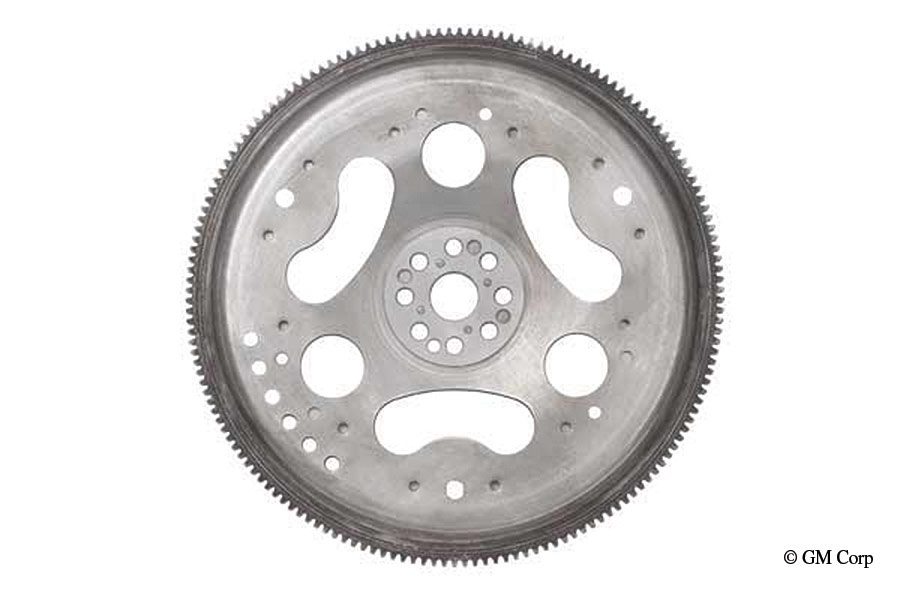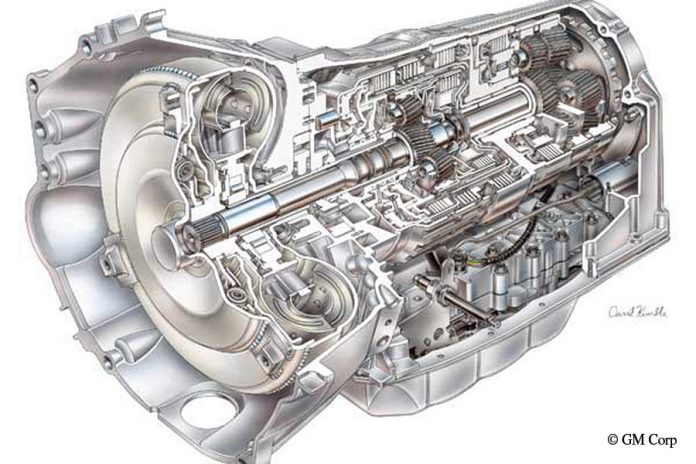By Dan Watson
Automatic Transmission Fluids (ATF) are the most complex fluids used in today’s vehicles. These complexly designed fluids perform multiple functions including:
- Lubrication
- Wear protection
- Heat dissipation
- Foam prevention
- Shift quality optimization
- Hydraulics
- Material compatibility

To make ATF formulation even more complex, companies that produce automatic transmission fluid must align their products with all the different-from-each-other requirements specified by vehicle manufacturers. The following list is only a sample of the wide variations in the market place.
- General Motors: Dexron III to Dexron VI
- Chrysler: ATF-plus to ATF-4plus
- Ford: Mercon, Mercon V, Mercon SP and Mercon LV
- Allison Transmissions: C-4, C-5 and TES-389
- Toyota: TO-4 and WS
- Honda: Z-1 and CVT
- Nissan: Nissan Matic-D, J and K
This is only a fraction of all the manufacturers’ specifications – and the list grows more and more ever year. As a vehicle owner, you must insure that the proper ATF is used in your vehicle by paying attention to your owner’s manual. Proper ATF in your automatic transmission is the key to the proper operation and life of your transmission. Simply put, using the wrong ATF may cause it to shift improperly and incompatible material may begin to deteriorate.
Understanding Your Automatic Transmission
If we take a more in-depth look at the functions listed above and how these are critical to proper transmission performance and life, it should be clear that using the specified ATF is imperative.
ATF Lubrication
Automatic transmissions contain hundreds of moving parts, including bearings, gears and sliding mechanisms. Multiple lubrication regimes (see “Intro to Lubrication“) and a fluid that lubricates over a wide range is required. The bearings require light weight oils that are designed for high speed applications in which the gears require oils capable of protecting the gears at the gear tooth interface.
ATF Wear
Proper lubrication is the key to reducing wear. Wear protection is established by the correct anti-wear additives, as well as the strength and stability of the oil used as the base stock. Again, what makes this challenging is the wide range of lubrication regimes that occur inside an automatic transmission.
Heat Dissipation
Heat is the No. 1 factor in transmission failures in modern vehicles. High pressure fluid and heat produced by the interaction of transmission gears causes automatic transmissions to build up heat; this is especially true under heavy loads. The ATF fluid is the major medium of heat transfer to remove the heat from the transmission. Air flow over the transmission will provide additional heat removal, but the modern aerodynamics of vehicles limits the airflow and so increases the heat load on the fluid.
Hydraulics
Automatic transmissions use hydraulic actuation to move gears into different ratios, resulting in different vehicle speeds. Clutches are engaged and disengaged using hydraulic pressure, as well. Without hydraulics might be nearly impossible to construct the modern automatic transmission.
Anti-Foaming
It is always counterproductive for lubricating oils to foam, since foamy oil does not establish a working oil film for protection. For hydraulic oils, it is fundamental for proper operation; foam is compressible and defeats the principle of pressurized oil performing work. Simply, foaming will limit or stop hydraulic actuation.
Material Compatibility
Various materials are used in automatic transmissions components: O-rings, clutch faces, gaskets and seals. Automatic transmission fluids must be compatible with all of these component materials or damage will cause operational problems that will lead to transmission failures.

Shift Quality
As if all the specifications required to satisfy the complex lubrication and functional aspects of automatic transmission fluid were not enough, each manufacturer requires different shifting characteristics – some manufacturers require a soft shift and others a hard shift – along with vastly different load bearing requirements. Some transmissions are four-speeds and many now are six-, seven- or eight-speed; each of these configurations creates varying geometric arrangements that affect component size and stress. So, there really is a legitimate reason why the different manufacturers develop tailored specifications for their transmissions; the transmissions are different and designed specifically for their line of vehicles.
Choosing the Right Automatic Transmission Fluid (ATF)
So, with all this information on the complexity of automatic transmission fluid, what should the consumer look for when buying ATF the next time the transmission needs serviced? The best approach is to systematically match your vehicle’s needs to the correct ATF and then find the best quality ATF for your application. Here are some steps to follow:
Step One: Check your owner’s manual to see what is specified for your vehicle. This is the most critical step in the selection process. Get this wrong and you could damage your transmission and incur expensive transmission repairs. Be especially attentive to the manufacturers’ specifications (eg: Dexron VI, Mercon V, Chrysler ATF+4 etc.). If you are having the service done at a service center, ask questions about the ATF. Some change centers seem to think ATF is ATF and they put the same fluid in every car.
Step Two: Acquire the necessary gaskets and filters required to change the transmission oil. If you are having the service done at a service center, ask questions about the changing of filters; some change centers do not change filters unless you direct them to do so. Internal transmission filters should be changed at least at 100,000 miles (I personally recommend every time the transmission fluid is changed).
Step Three: Choose between a complete transmission exchange or the traditional drop-the-pan and method. I do not like the idea of leaving used fluid in the transmission and mixing new, clean fluid with the old, dirty fluid. Certainly, it costs more for the exchange, but transmission repairs are the most expensive repair that will be done in the life of the vehicle and doing anything that will extend the life of the transmission just makes good sense.
Synthetic Vs Petroleum ATF
Should you use synthetic or petroleum automatic transmission fluid? This really is a straightforward analysis and the facts will lead to a correct decision. The easiest and most sensible approach is to compare the use of synthetic vs. petroleum for each of the stated functions of ATF.
Lubrication: Proper lubrication depends on both the base stock and additives to provide lubrication throughout the complete operating range of the transmission. Transmissions operate from cold to very hot, and the thermal properties of synthetics vs. petroleum results in a clear advantage for synthetics. Synthetic base stocks offer very wide temperature ranges with little effect on viscosity, while petroleum base stocks are not thermally stable, thinning at high temperature and thickening at low temperature.
Advantage: Synthetic
Wear Protection: Wear is directly related to additives and oil viscosity. As previously explained, synthetic oils maintain viscosity over wide temperature ranges, where petroleum oils change viscosity significantly over the same temperature range. Assuming the anti-wear additives are equal, the superior thermal stability of synthetic oils results in a far superior anti-wear performance for synthetic automatic transmission fluids.
Advantage: Synthetic
Heat Dissipation: In liquid state, the heat transfer quality for the synthetic ATF and the petroleum ATF is nearly equal. Synthetic oils will remain liquid at very high temperatures, where petroleum oils will thin and begin to flash to vapor at high temperatures. When the petroleum oils reach the point of flashing to vapor or being a mixed vapor liquid combination, heat dissipation is severely reduced.
Advantage: Synthetic
Foam Prevention: When lubricants foam, their ability to lubricate properly and prevent wear is significantly reduced. Additionally, foaming of fluids used in hydraulics prevents proper hydraulic action. Air is compressible and oil is not, so any amount of air in the hydraulic system will cause erratic operation. With proper additives, antifoaming of synthetic and petroleum based is virtually equal. Poor anti-foaming additives will allow for foaming regardless of the base stocks employed.
Advantage: None
Hydraulics: The movement of gears and engagement of clutches in the transmission is accomplished by hydraulics. Hydraulic systems use compressed oil to move pistons, and this, in turn, moves components to establish various gear ratios. When oil is operating at very high temperatures, flashing to vapor occurs. Vapor is compressible, and, for hydraulics to work, the medium (oil) cannot be compressible. Synthetic oils will tolerate much higher temperatures than petroleum oils before losing viscosity and flashing to vapor. The higher temperature range gives synthetic oils a superior hydraulic function at high temperatures. At very low temperatures, petroleum oils are similar to pudding, where synthetics are less viscous.
Advantage: Synthetic

Shift Quality: The engagement of the clutches and the gears in the automatic transmission is dependent on design and friction additives in the oil. Original equipment manufacturers will design the transmission for the shift of their choice, from very soft to very hard. Friction modifiers are the main elements controlling the shift quality. Synthetic or petroleum, the shift is a function of design and additives.
Advantage: None
Material Compatibility: Gaskets, O-Rings and clutch material must be compatible with the automatic transmission fluid including the additives. Modern materials are compatible with both petroleum and synthetic fluids with little difference.
Advantage: None
And the Winner is…
Looking at the functions established for automatic transmission fluids, synthetic fluids are superior in four of the seven functions, while petroleum fluids are superior in none. For three of the seven functions, there is no advantage of one fluid type over the other. This analysis results in a clear advantage for synthetic automatic transmission fluid.
When purchasing ATF for your vehicle, be sure to meet the specific requirements stipulated by your vehicle’s manufacturer. Today’s transmissions are incredibly complex mechanisms and, correspondingly, the automatic transmission fluid that they require can be very specific. Misapplication can cause expensive repairs. Synthetic transmission fluids will provide superior performance over a wide range of applications and extend the life of your transmission.
For questions and/or comments, contact me via my website, www.TheLubepage.com, or by email at danwatson@thelubepage.com.






